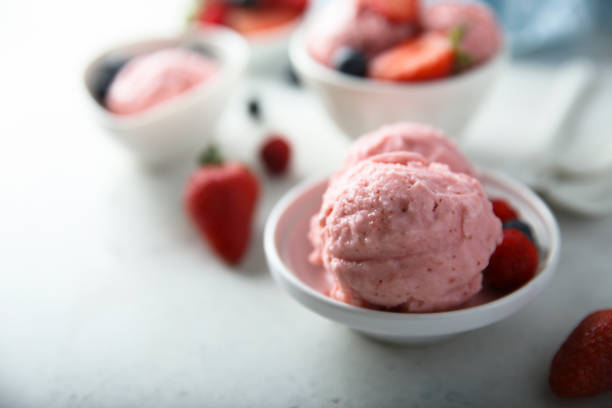Frozen yogurt is a popular treat that is enjoyed by many people all over the world. It is a delicious and refreshing alternative to traditional ice cream, and it is also a healthier option. However, many people are not aware of how many calories are in frozen yogurt, and whether or not it is a good choice for those who are trying to lose weight or maintain a healthy diet.
First, it’s important to understand that the calorie content of frozen yogurt can vary depending on the specific type of frozen yogurt you are consuming. For example, a serving of plain, non-fat frozen yogurt typically contains around 80-100 calories per half cup. On the other hand, a serving of full-fat, flavored frozen yogurt can contain anywhere from 150-300 calories per half cup.
It’s also important to note that the calorie content of frozen yogurt can vary depending on the specific brand and flavor. Some brands and flavors may contain more calories than others, so it’s important to check the nutrition label before consuming. Additionally, toppings such as chocolate chips, fruit, and syrups can add extra calories to your frozen yogurt.
The number of calories in frozen yogurt can vary depending on the brand and the flavor. Generally, a serving of frozen yogurt contains between 100 and 150 calories. This is significantly less than the average serving of ice cream, which contains around 250 calories. Additionally, frozen yogurt typically has less fat and fewer grams of sugar than ice cream.
Frozen yogurt can also be a good source of calcium and protein, both of which are essential for maintaining strong bones and muscles. A serving of frozen yogurt can provide around 10% of the recommended daily intake of calcium and around 5 grams of protein.
However, it’s important to note that not all frozen yogurt is created equal. Some brands and flavors may contain added sugar and artificial flavors, which can increase the calorie and sugar content. To avoid this, it’s best to opt for plain, non-fat frozen yogurt, or to make your own frozen yogurt at home.
When making your own frozen yogurt at home, you can control the ingredients and make sure that it is low in calories and sugar. You can use non-fat milk, Greek yogurt, and honey or stevia as a sweetener. This will ensure that you are getting a healthy treat that is low in calories and sugar.
In terms of nutritional value, frozen yogurt can be a good source of calcium, protein and probiotics, depending on the brand you choose. Many brands of frozen yogurt are made with live and active cultures, which can provide a boost of probiotics to your gut health. The protein and calcium can also help to keep your bones strong and healthy.
However, it’s important to note that not all frozen yogurts are created equal. Some brands may contain added sugar, artificial flavors and preservatives, which can decrease the nutritional value of the frozen yogurt. Additionally, some frozen yogurts may contain high fructose corn syrup or other sweeteners, which can contribute to weight gain and other health problems.
To ensure that you’re getting the most nutritional value out of your frozen yogurt, it’s important to look for brands that are made with natural ingredients and contain live and active cultures. Additionally, opting for non-fat or low-fat varieties can help to reduce the calorie content of your frozen yogurt.
Another important thing to keep in mind is portion control. A serving of frozen yogurt is typically around 1/2 cup, but it’s easy to eat more than that if you’re not paying attention. It’s a good idea to measure out your serving and eat it slowly, savoring each bite. This will help you to enjoy the taste without consuming too many calories.
In conclusion, frozen yogurt is a delicious and refreshing treat that is also a healthier alternative to ice cream. It is low in calories and can be a good source of calcium and protein. However, it’s important to be aware of the calorie and sugar content of different brands and flavors, and to control portion sizes. Making your own frozen yogurt at home is a great way to ensure that you are getting a healthy treat that is low in calories and sugar.

 Home
Home Health
Health Diet & Nutrition
Diet & Nutrition Living Well
Living Well More
More













